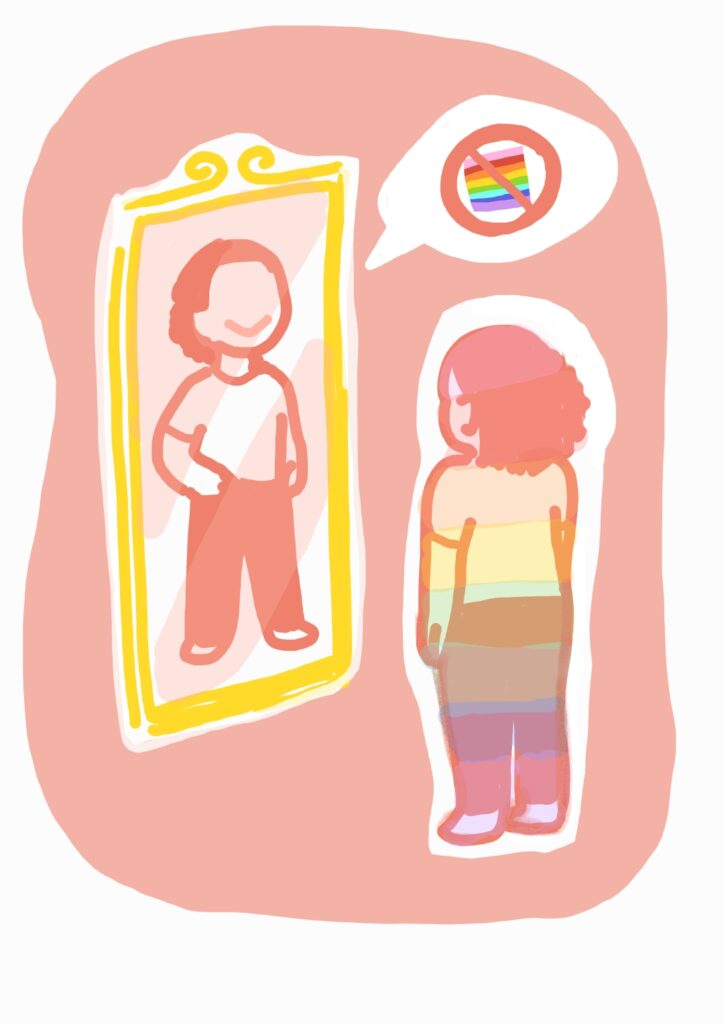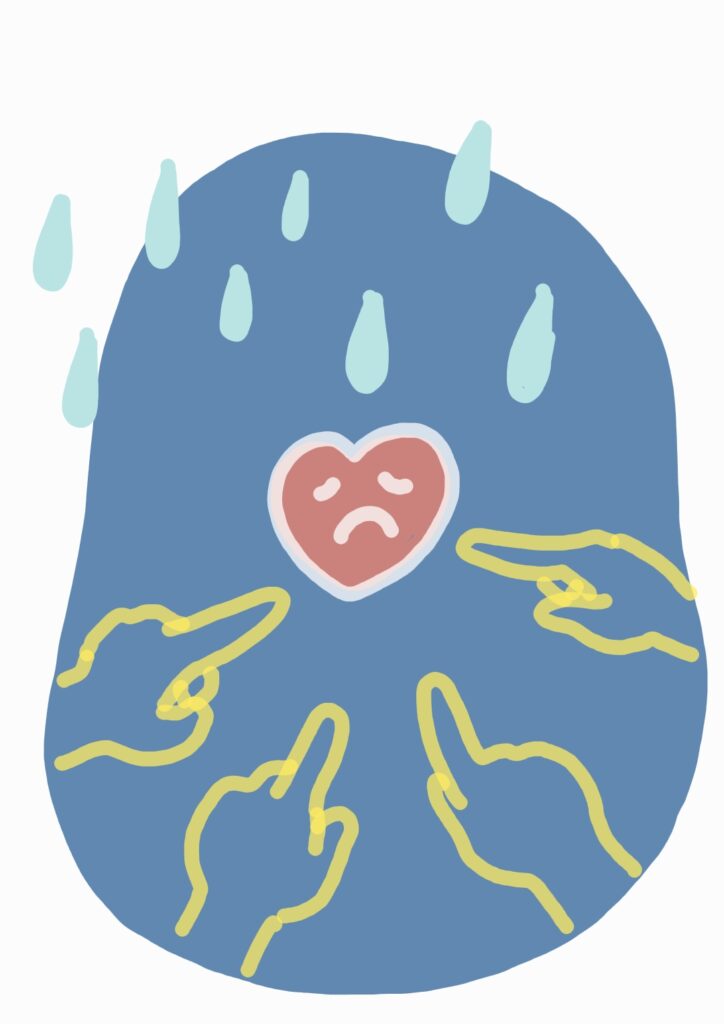Most people would agree that the U.S. constitution is important and valuable because it guarantees separation between religious ideologies and their influences on legal matters. In my experience, though, there’s a catch that as long as the religion is converting lesbian, gay, and bisexual youth to appear heterosexual, they are an exception to this rule. This article will be not only drawing points about how the gender-affirming approach to “treat” those of us with gender dysphoria is enforced through leaps of faith, but will also reveal that the gender ideology used to transition children is essentially indiscernible from the same conversion therapy that organized religious communities have historically used to “treat” those of us who are same-sex attracted.

The first parallel is that both organized religion and believers in gender identity ideology involve the indoctrination of children with theories that are essentially theological. Gender affirming care treats “being transgender” as an identity someone intrinsically is rather than a surgical and cosmetic treatment option for mental illness. Despite the lack of a scientific basis for this treatment’s efficacy, youth frequently learn about gender-affirming care in schools as part of the curriculum and have it reinforced in places like gender clinics. This raises ethical concerns because impressionable youth are more likely to identify themselves as transgender to imitate their peers in order to feel a sense of belonging (1). This is especially concerning for children who might later realize that they are same-sex attracted (gay, lesbian, or bisexual). According to peer-reviewed studies, children diagnosed with gender dysphoria are more likely to be same-sex attracted and therefore more likely to be given the aforementioned medical treatments (2) turning them into unwitting test subjects. Ultimately, a treatment that will have a permanent effect on their health and development is promoted despite having been shown to worsen depression, anxiety, and mental health over time (3).

Similar to the religious groups that promote the subjects of their conversion therapy – the happy “ex-gay” who has been “cured” – believers in gender identity ideology instigate media attention to display their loyalty to the faith in the form of the child who has been “cured” via transition. For example, the show I Am Jazz presents the solution to a clearly gender-nonconforming male child suffering from mental issues to be that “he” has really been a “she” the whole time. Using puberty blockers to transition a male child to present as female is a form of conversion therapy, however, it is applauded in this context to desensitize the target audience, children. This is in spite of the numerous dangers to hormone replacement therapy and puberty blockers in children that are intentionally glossed over when discussing transition. Does a child really have the intellectual capacity to truly consent to the underdevelopment of their genital tissue, loss of bone density, and lifetime sterility? What is even more concerning is that amongst these physical risks doctors still don’t know the full extent of the effects medical transition has on brain development (4).
Additionally, both groups treat defectors of the faith in horrific manners. When both groups come across desisters, the desisters are cast out and ostracized because their decisions are no longer under the group’s control. If someone decides to detransition, they are blamed and treated as though they are at fault for still suffering from dysphoria, despite evidence indicating that transition worsens suicidal ideation and therefore is not a viable option for gender dysphoria (5). Similarly, organized religions have a history of coercing their LGB-members into maintaining heterosexual relationships despite the toll it may take on their mental well-being. Comparatively, the trans community will do the same by pressuring same-sex attracted individuals to include trans-identifying people of the opposite sex inside their dating pool. In reference to the “cotton ceiling“ and “boxer ceiling”, many lesbian women and gay men have suffered mental anguish from gender ideologists using these conservative tactics.

The final parallel between gender identity ideology and organized religion is that they encourage the idea of a group of people that is nearly beyond scrutiny – a “sacred caste” that it is frowned upon to consider as a possible risk for the vulnerable. The scandals which surrounded the Catholic Church uncovered a shocking amount of child abuse at the hands of priests and nuns, with the institution itself initially refusing to intervene to protect the vulnerable, and communities of believers often admonished for or discouraged from bringing their concerns to light. In a similar way, safety concerns for women surrounding trans-identified males in women’s spaces are admonished (if not demonized) and discouraged, despite evidence that trans-identified males have a similar criminality rate to that of other males (3). This is especially evident when a trans-identifying male person attacks a girl or woman in a women’s space (6,7,8). Therefore, the mere declaration of being a woman gives biological males access to all women’s spaces while maintaining their male privilege.
Within anti-trans discrimination laws, there are no safety measures in place to ensure that male predators are not able to take advantage loopholes in the law. Clearly this raises safety concerns for biological women fleeing male abusers by seeking sanctuary in women’s shelters, women’s rape crisis centers, and women’s halfway houses. Further, in some places the most vulnerable women – those incarcerated in prisons – may be housed with males and have no recourse to get away (9).
Without being verified as having a valid basis in reality, gender identity ideology being applied into our laws makes as much sense as writing into law any religious beliefs. You have a right to believe in the concepts of gender identity ideology, but these shouldn’t be the basis with which our lives are governed in law any more than any other religious belief.
Works Cited
1. Littman L (2018) Rapid-onset gender dysphoria in adolescents and young adults: A study of parental reports. PLoS ONE 13(8): e0202330. https://doi.org/10.1371/journal. pone.0202330
2. A Follow-Up Study of Boys With Gender Identity Disorder – Devita Singh, Susan J. Bradley and Kenneth J. Zucker – University of Toronto
3. Dhejne C, Lichtenstein P, Boman M, Johansson ALV, Långström N, Landén M (2011) Long-Term Follow-Up of Transsexual Persons Undergoing Sex Reassignment Surgery: Cohort Study in Sweden. PLoS ONE 6(2): e16885. doi:10.1371/journal.pone.0016885
4. Guido Giovanardi, Buying time or arresting development? The dilemma of administering hormone blockers in trans children and adolescents, Porto Biomedical Journal, Volume 2, Issue 5, 2017, Pages 153-156, ISSN 2444-8664, https://doi.org/10.1016/j.pbj.2017.06.001
5. Adams, N., Hitomi, M., Moody, C.. 2017. “Varied Reports of Adult Transgender Suicidality: Synthesizing and Describing the Peer-Reviewed and Gray Literature.” Transgender Health 2:60–75. doi: 10.1089/trgh.2016.0036.
6. https://www.womenarehuman.com/woman-in-homeless-shelter-threatened-by-male-transgender-resident/
8. https://www.thetimes.co.uk/article/female-only-spaces-must-be-given-greater-protection-lkfx3w3d6


This is an excellently written article, and very much reflects the experiences of myself and other lesbian women and gay men I know in terms of how gender ideology promotes and reinforces homophobia. The only thing I might add is that gender ideology, unlike religion, comes from within spaces that were previously safe havens for us, and is dominant within organisations that purport to represent homosexual people. I’m very grateful to the LGB alliance for advocating for us for this reason, since they’re a rare exception.
I really worry for young gay men, lesbian women and bisexual people who manage to escape the grip of religious institutions and social groups that try and convert them, only to land themselves in progressive “queer” spaces that spout the same conversation rhetoric in new terms.